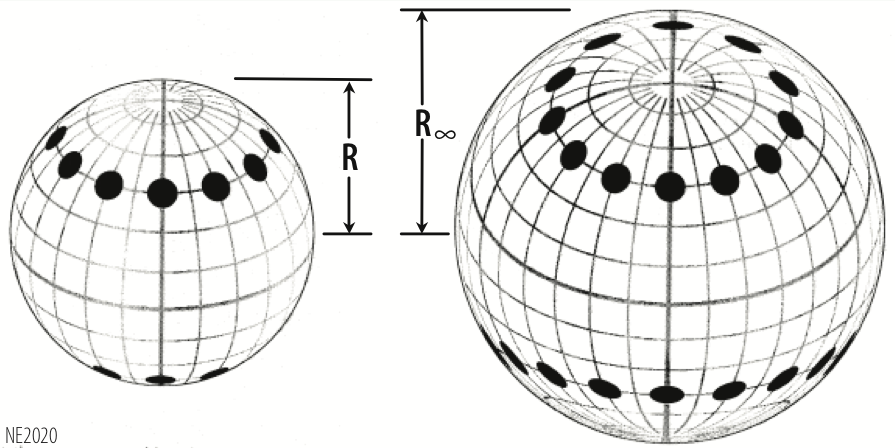NICER / ISS Science Nugget
for November 14, 2019
Key results depend on sophisticated numerical simulations
This week, The Astrophysical Journal Letters accepted for publication a
paper by the NICER science team (Bogdanov et al. 2019, Paper II) that
describes a key method that we use to extract neutron star radius and
mass measurements from NICER's X-ray observations of millisecond
pulsars. This method, which drove the NICER design and mission concept,
makes use of the gravitational bending of light expected due to the high
density of neutron stars.
Many neutron stars appear to pulse because hot spots on their surfaces
rotate in and out of our view as seen from the Earth. When the star's
rotation places a hot spot on the side of the star nearer to the Earth,
it appears to brighten. As the star rotates and the hot spot moves to
the far side, as seen from the Earth, it fades. The millisecond pulsars
that NICER observes rotate hundreds of times each second, leading to
pulses every few milliseconds.
In strong gravity, Einstein's theory of general relativity predicts
that light bends. The denser the object, the higher the degree of
gravitational light bending. The effect with pulsars is that as a hot
spot rotates out of our field of view, we continue to see some of its
emission, depending on the ratio of the star's mass to its radius. This
affects the depth of modulation of the pulses.

Figure:
A rotating neutron star with a pair of antipodal hotspots as seen by a
distant observer without light-bending (left) and for strong gravity
(M/R = 0.25, right). The visibility of the far-side hotspot provides a
measure of M/R through light curve analysis with NICER. (Adapted from
Nollert et al. 1989.)
The paper describing our detailed numerical modeling of this effect will
be published alongside NICER's first definitive results on neutron star
mass and radius in the coming weeks.
<< Previous
Main Index
Next >>